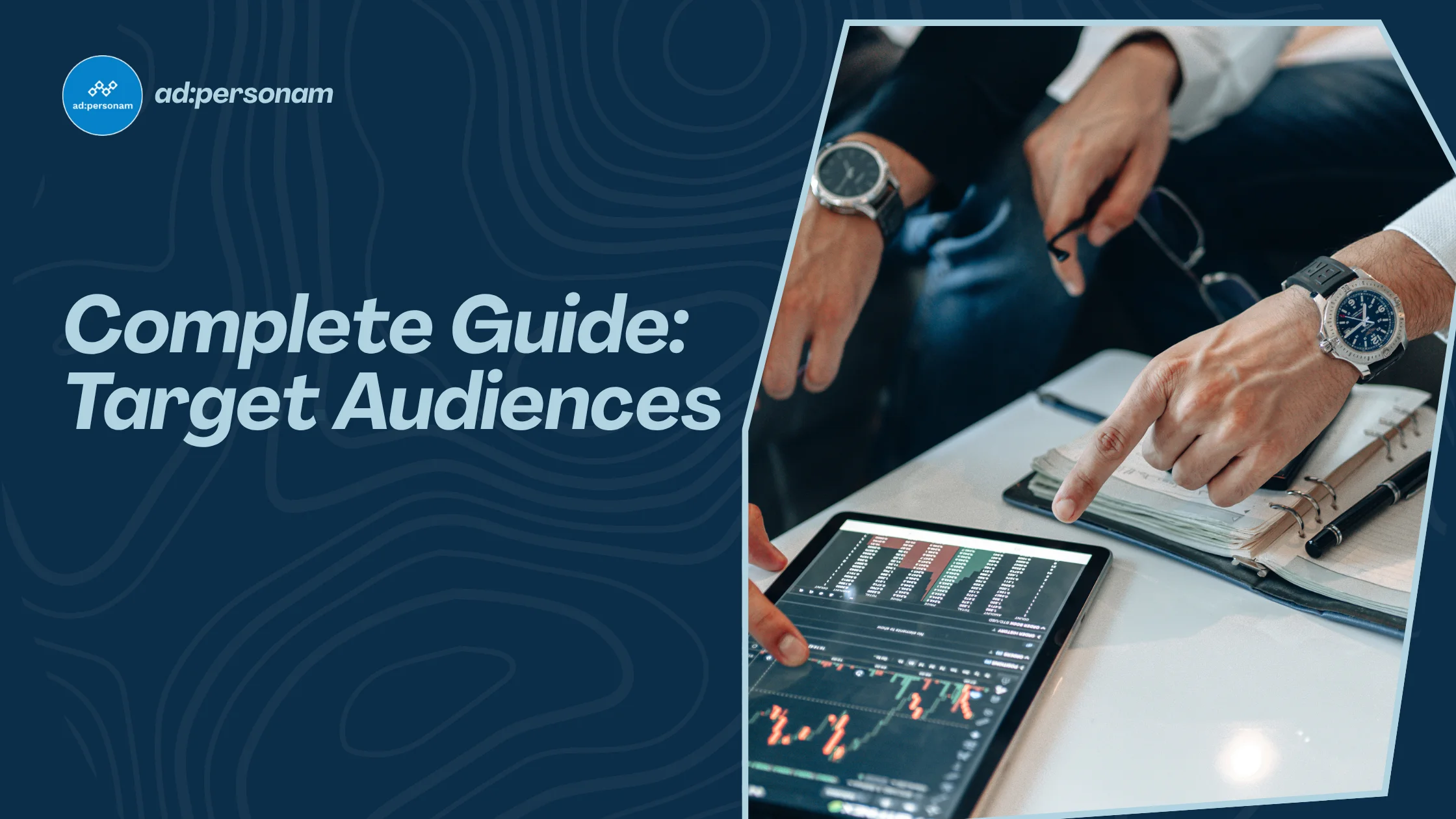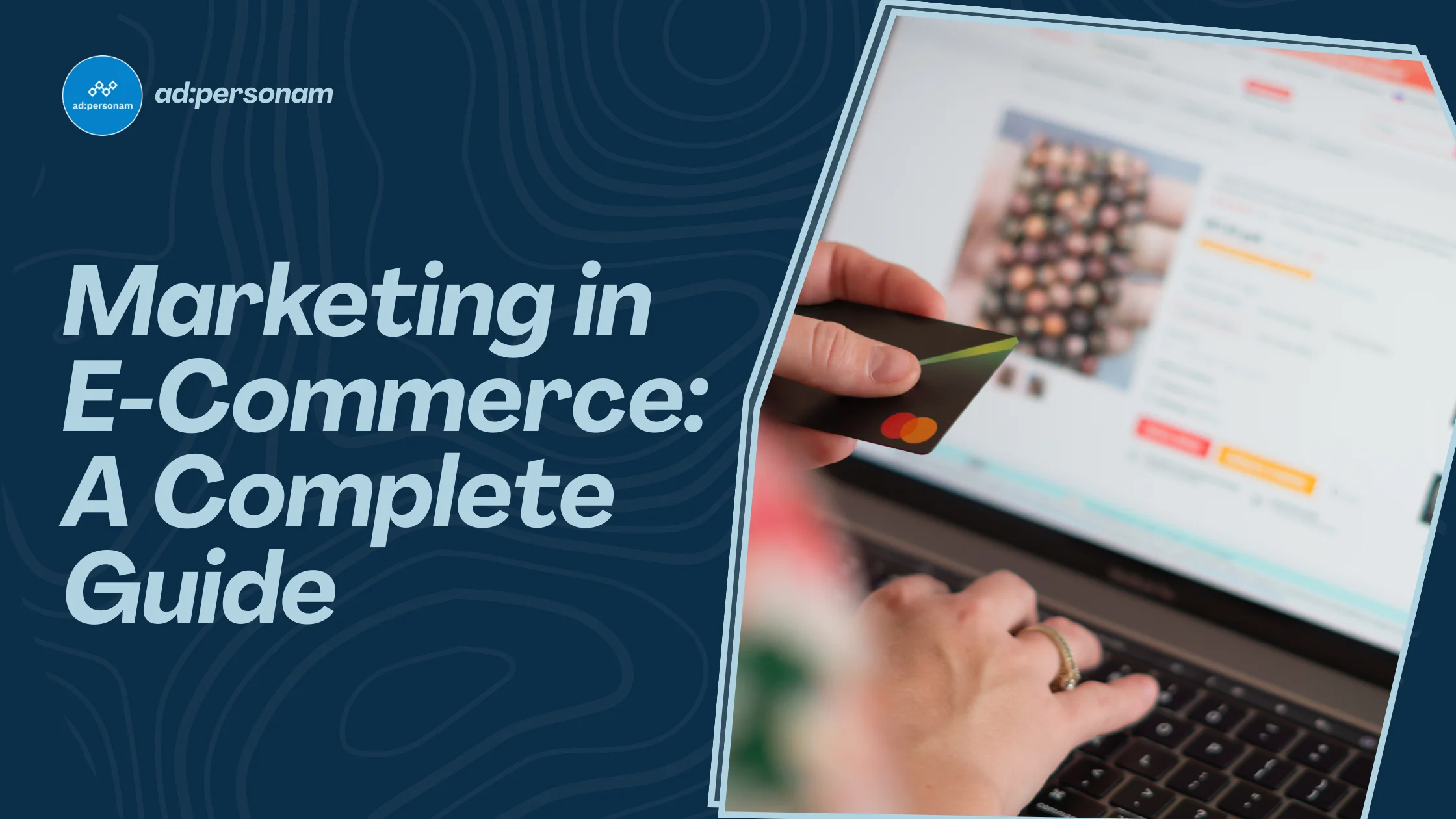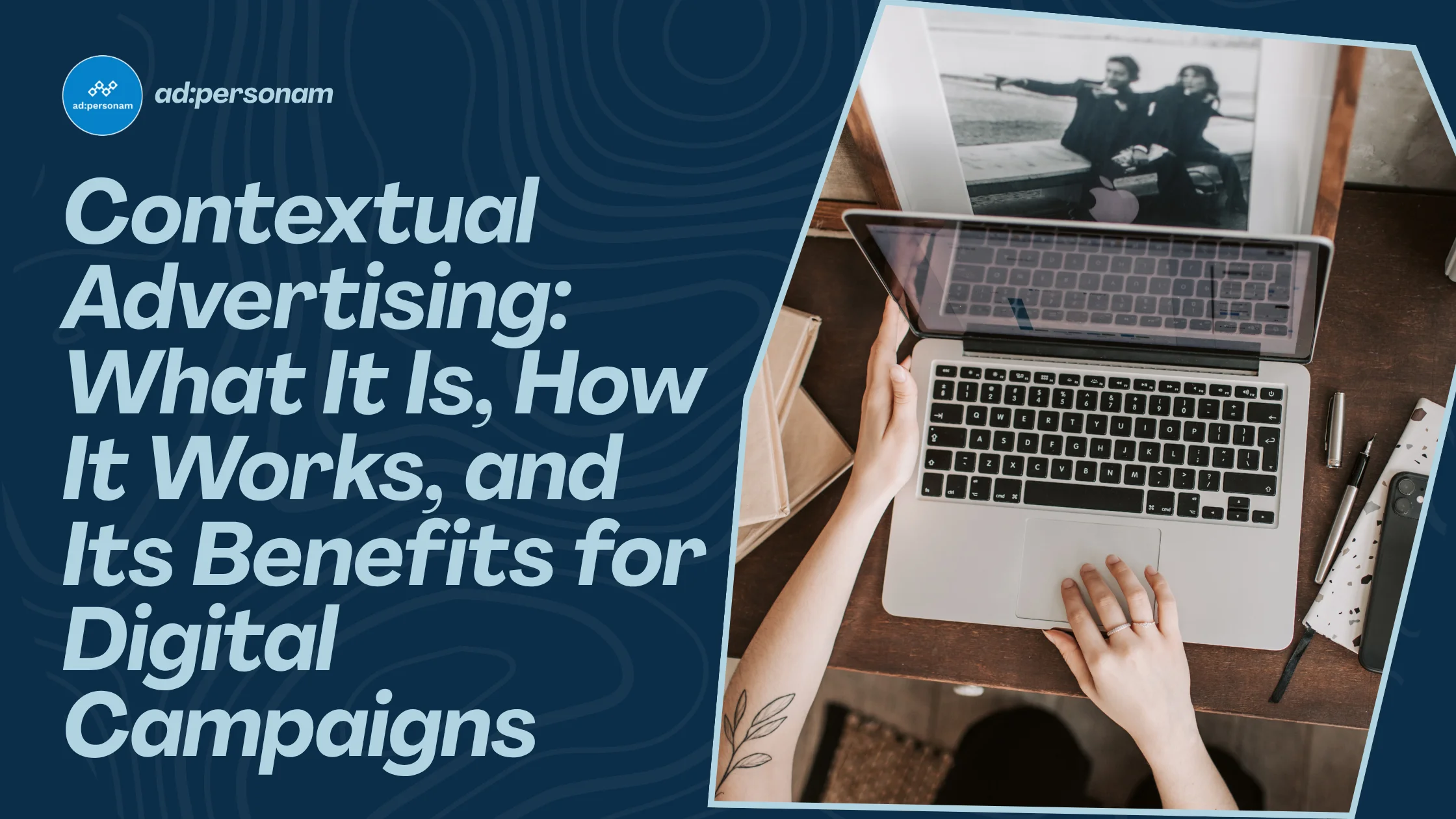Target Audiences: The Complete Guide to Defining, Analyzing, and Activating Your Ideal Customers
Master the art of defining target audiences. Learn how to identify, analyze, and activate your ideal customer segments for highly effective ad campaigns.
Contents
- What Are Target Audiences?
- Target Audience vs. Target Market: Key Differences
- Why Target Audiences Are Critical to Success
- Types of Target Audiences
- Target Audience Examples
- How to Identify Your Target Audiences
- Data and Tools for Audience Analysis
- Buyer Personas Connected to Target Audiences
- Target Audiences and Brand Positioning
- Messaging and Creative: How to Speak to Your Audiences
- Channels and Audience Activation
- Personalization and Advanced Segmentation
- KPIs, Measurement, and Attribution Models
- Localization and International Markets
- Updating and Maintaining Target Audiences Over Time
- Privacy, Compliance, and Data Security
- Common Mistakes to Avoid
- Practical Examples and Mini Case Studies
- Target Audiences FAQ
- Define Your Target Audiences with ad:personam

Defining your target audiences is the foundation of effective marketing strategies. When you know precisely who your ideal customers are, what problems they're solving, and which channels they use to research solutions, you can speak their language and optimize your resources for maximum impact.
In this comprehensive guide, we'll explore everything you need to identify, analyze, and activate your target audiences, transforming them into concrete growth levers for your business.
What Are Target Audiences?
Target audiences are groups of people united by shared needs, behaviors, and buying contexts. It's crucial to remember that "audiences" aren't static—they evolve with new data, the changing digital landscape, and market transformations.
Audiences also exist across multiple levels: from broad macro-segments to highly refined micro-segments. Their definition must always align with business objectives and your brand's value proposition to avoid wasted spend and messaging inconsistencies.
Target Audience vs. Target Market: Key Differences
These terms are often confused, but they represent distinct concepts. The target market is the broad category of consumers potentially interested in a product or service, while target audiences are more specific, actionable subsets useful for campaign planning. The market defines your business direction, while audiences translate that direction into targeted messages and content. During strategy and product development, you work with the target market; during media planning and activation, you focus on audiences.
Why Target Audiences Are Critical to Success
Properly defined audiences deliver immediate benefits: more relevant messaging, reduced customer acquisition costs (CAC), higher conversion rates, increased loyalty, and even product improvements through indirect feedback. These improvements reflect across your most important KPIs: CTR, CVR, CPA, and LTV. Mapping benefits throughout the funnel helps you understand how needs shift from awareness through retention, while strengthening brand positioning.
Types of Target Audiences
There are multiple segmentation approaches. The most traditional are demographic, geographic, and socioeconomic. These are complemented by psychographic segmentation based on values, motivations, and lifestyles, and behavioral segmentation that analyzes purchase frequency or triggering events. An increasingly popular approach is jobs-to-be-done: what needs or triggers drive the purchase. In B2B contexts, it's essential to consider account-level audiences and distinguish between decision-makers, influencers, and end users.
Target Audience Examples
In the B2C space, consider a sustainable skincare brand targeting women aged 25-35 focused on sustainability. The challenge for this audience is finding effective yet natural products. Since they're active on Instagram and TikTok, campaigns should reach those platforms with key messages like "green ingredients." The primary campaign metric is CTR on social ads.
For B2B campaigns, imagine a CRM software company serving SMBs. The audience includes marketing and sales managers struggling to manage leads. The most suitable advertising channels are LinkedIn and vertical industry events, measuring success through demo requests.
Local campaigns, like neighborhood gyms, can target different segments. One might be new mothers seeking postpartum fitness programs. The channel is Facebook groups, the message focuses on gradual wellness recovery, and the metric is first-class sign-ups.
How to Identify Your Target Audiences
The process begins with analyzing existing customers: who has the highest LTV, lowest churn rates, and most enthusiastic reviews. Next comes competitive analysis: reviews, value propositions, and unmet gaps. It's essential to gather direct feedback through interviews, surveys, and chat data. Add social listening and quantitative data from CRM, analytics, and heatmaps. Finally, observe industry context and synthesize insights into actionable clusters, evaluating their size, accessibility, and profitability.
Data and Tools for Audience Analysis
Primary sources include CRM, analytics, email marketing, and customer support. Secondary and tertiary sources range from industry reports to panels. The most useful tools include analytics platforms, survey builders, audience targeting tools in ad campaigns, and business intelligence systems. Best practices involve representative sampling, data cleaning, and triangulation between qualitative and quantitative insights. Watch for bias: samples that are too small or the temptation to confirm pre-existing hypotheses can distort results.
Buyer Personas Connected to Target Audiences
Buyer personas are narrative archetypes that tell an audience's story. If the audience is an actionable cluster in media, the persona is the empathetic, contextualized representation. An effective persona should include context, pain points and gains, barriers, triggers, and even a typical quote. For example, a B2C persona might be validated by cross-referencing purchase data with interviews, while a B2B persona can be verified through LinkedIn campaign analytics.
Target Audiences and Brand Positioning
Each audience evaluates alternatives using different criteria: price, reliability, brand identity. This requires a matrix linking message, benefit, and concrete proof, such as testimonials or case studies. It's helpful to map messages throughout the funnel and adapt them by channel: SEO, paid ads, email, or social.
Messaging and Creative: How to Speak to Your Audiences
Effective copy starts with a clear promise, adds proof, and closes with a next step. Tone and formats must be adapted: an Instagram carousel works differently than long-form content on LinkedIn. Creative levers can include the problem to solve, the aspiration to achieve, a direct comparison with competitors, or user-generated content.
Channels and Audience Activation
Channel selection depends on objectives, cost, reach, and intent level. SEO and content help intercept informational queries, paid advertising enables audience and lookalike targeting, email marketing segments and automates communications, social platforms build communities, while partnerships and PR increase credibility. Maintaining omnichannel consistency and balancing minimum and maximum frequency is essential.
Personalization and Advanced Segmentation
Working with micro-segments means activating messages for cart abandoners, active trial users, or those ready to upsell. Personalization can occur on websites, in apps, or through CRM systems. A/B testing helps validate hypotheses, with the option to roll back if results don't confirm expectations.
KPIs, Measurement, and Attribution Models
Each audience should be monitored with specific KPIs, such as CVR between segment A and B, or ARPU by cohort. Attribution model selection depends on your sales cycle: last-click for short funnels, multi-touch models for complex journeys. A dashboard should distinguish between leading indicators (e.g., engagement) and lagging indicators (e.g., revenue).
On ad:personam's DSP platform, you'll find the most suitable KPIs to measure your campaign performance.
Localization and International Markets
Adapting messaging for different cultures means revising claims, proof points, pricing, and channels. Some countries have unique media behaviors and different regulations that cannot be ignored. A sound approach is test-market: start with a pilot, then scale.
Updating and Maintaining Target Audiences Over Time
Audiences should be reviewed quarterly or semi-annually. Drift signals can include declining conversion rates or rising CPMs. Documenting profile versions with changelogs helps preserve institutional memory. Unprofitable segments should be gradually phased out.
Privacy, Compliance, and Data Security
Privacy respect is foundational: informed consent, data minimization, retention rules, and the right to be forgotten are essential. It's crucial to distinguish between interest-based targeting and using sensitive data, assigning clear responsibilities to marketing, legal, and IT teams.
Common Mistakes to Avoid
The most frequent errors include creating segments that are too broad or not actionable, falling for vanity metrics, or confusing persona with audience. Another risk is failing to align segments with the funnel or unit margins, or worse, adapting a message for a single channel while losing the big picture.
Practical Examples and Mini Case Studies
A home furnishings e-commerce site identified young couples moving to new homes as an audience. By activating display campaigns with contextual targeting on real estate listing portals, they reduced CPA by 20%.
A SaaS company defined an audience of SMB CFOs, launching educational content on LinkedIn and achieving a 35% increase in booked demos. The lessons? Message-channel alignment is decisive, and data must always be field-tested.
Target Audiences FAQ
What's the Difference Between Audience and Target?
The audience represents the people who actually receive an advertising message, while the target is the objective group. With ad:personam, you can transform your target into real audiences using programmatic tools and AI algorithms.
What Does Target Audience Mean?
A specific group of users a brand wants to direct its advertising messages toward. With ad:personam, you can easily define your target audience and activate display, video, or native advertising campaigns.
What Does Target Mean?
It's the reference audience chosen by a brand for its activities. ad:personam enables precise selection and reach with programmatic ads optimized in real time.
Define Your Target Audiences with ad:personam
In conclusion, to fully leverage target audiences for a campaign, you need to:
- Define your target audiences
- Analyze them with data and insights
- Activate them on the right channels
- Measure results
- Continuously optimize
With ad:personam, you can build an effective marketing strategy, starting from analyzing and creating your target audiences.
You might also like

E-commerce Marketing: Complete Guide to Strategies, Tools, and Programmatic Campaigns
Discover how ecommerce marketing optimizes traffic, conversions, and sales through digital strategies and programmatic advertising.

Travel Marketing: A Complete Guide to Programmatic Advertising
Master travel marketing with programmatic advertising. Learn data-driven strategies to boost bookings, reach travelers, and maximize ROI in hospitality.

Contextual Advertising: The Complete Guide to Privacy-First Targeting
Discover how contextual advertising delivers effective, privacy-compliant campaigns without cookies. AI-powered targeting for the cookieless era.